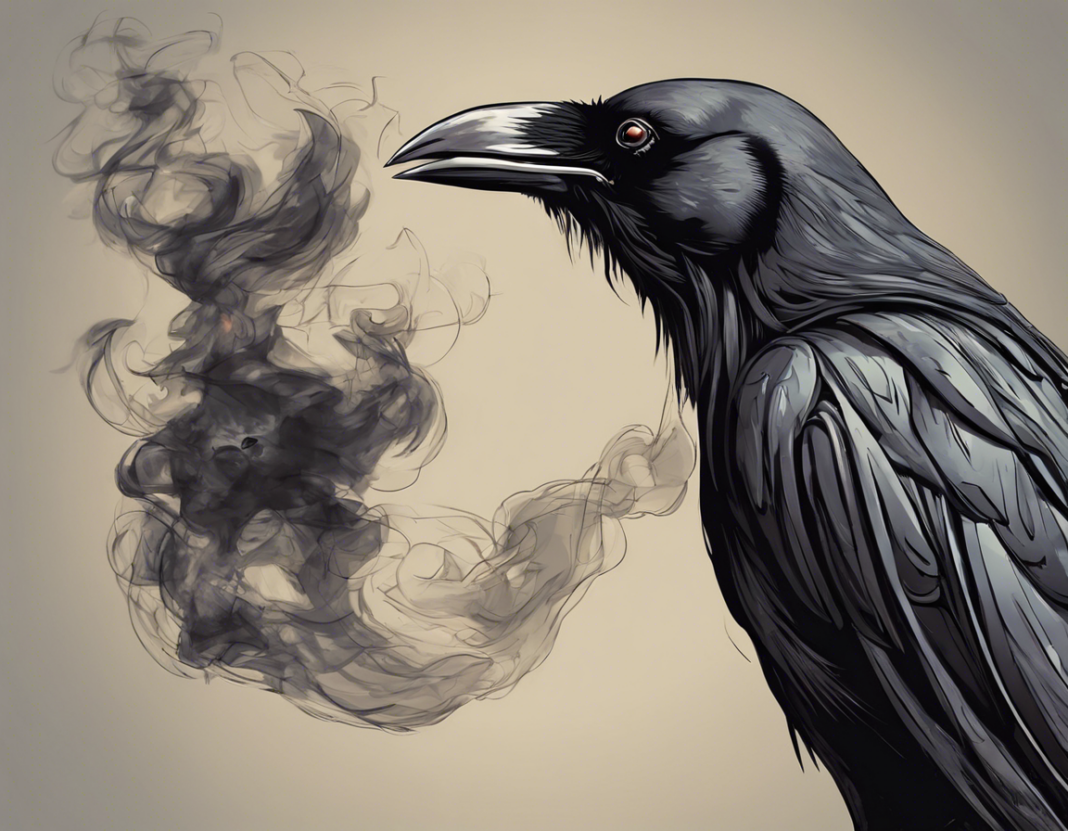Crows are often portrayed as mysterious and intelligent creatures in various cultures around the world. With their dark feathers and piercing eyes, these birds have captured the imagination of many people for centuries. Among the various species of crows, one particular behavior known as “smoking” has intrigued bird enthusiasts and researchers alike. Let’s dive into the fascinating world of the smoking crow bird and uncover some cool facts about this unique behavior.
The Smoking Crow Bird: An Introduction
Crows are highly adaptable birds that exhibit complex social behaviors and problem-solving skills. One such behavior is the smoking phenomenon observed in some crow populations. Smoking refers to the practice of crows picking up burning sticks or embers from a fire and carrying them to nearby locations. While this behavior may seem unusual, it has been documented in various parts of the world, including Australia, Africa, and North America.
Origins and Cultural Significance
The origin of smoking behavior in crows remains a subject of debate among researchers. Some believe that crows may have learned this behavior by observing humans or other animals interacting with fire. Others suggest that smoking could be a form of play or exploration for these intelligent birds. In some indigenous cultures, crows are considered sacred and are believed to possess mystical powers. The smoking behavior of crows adds to their enigmatic reputation and cultural significance.
The Mechanics of Smoking
When a crow encounters a source of fire, such as a campfire or a burning pile of vegetation, it will cautiously approach the flames. Using its beak, the crow will select a small burning stick or ember and carefully grasp it. The crow then takes flight, carrying the burning object in its beak or talons. Once at a safe location, the crow may drop the ember, use it to ignite dry grass or twigs for foraging purposes, or simply manipulate it as if examining the flames and smoke.
Possible Explanations for Smoking Behavior
While the smoking behavior of crows is intriguing, scientists have proposed several theories to explain this phenomenon:
-
Play and Curiosity: Some researchers believe that crows engage in smoking as a form of play or exploration. By interacting with fire, crows may be satisfying their curiosity and testing the boundaries of their environment.
-
Tool Use: Crows are known for their tool-using abilities. The act of carrying burning sticks could be a demonstration of this cognitive skill, as crows utilize the fire as a tool for various purposes.
-
Social Learning: It is possible that crows learn the smoking behavior from observing other members of their flock or from imitation. Social learning plays a crucial role in transmitting complex behaviors among crows and other intelligent animals.
The Significance of Smoking Behavior
The smoking behavior of crows sheds light on the cognitive abilities and adaptability of these birds. By interacting with fire, crows demonstrate a level of sophistication and problem-solving skills that are not commonly associated with avian species. Understanding this behavior can provide valuable insights into the evolution of intelligence in birds and the ways in which they interact with their environment.
Conservation and Protection of Crows
Crows play a vital role in maintaining ecological balance by scavenging carrion, controlling insect populations, and dispersing seeds. However, crows face various threats, including habitat loss, poisoning, and persecution. Conservation efforts are essential to ensure the survival of crow populations and protect the valuable ecosystem services they provide. By studying and appreciating the unique behaviors of crows, such as smoking, we can foster a greater appreciation for these intelligent and resourceful birds.
Frequently Asked Questions (FAQs)
Q: Is smoking behavior common among all crow species?
A: Smoking behavior has been observed in various crow species, although it is not exhibited by every individual bird. This behavior appears to be more prevalent in certain populations where crows have regular exposure to fire.
Q: Are there any risks associated with smoking behavior in crows?
A: While carrying burning objects may pose a risk of burns or injuries to the crows, they seem to exhibit caution and handle the embers with care. There is limited research on the long-term effects of smoking behavior on crow populations.
Q: Can smoking behavior be considered a form of tool use in crows?
A: Yes, smoking behavior can be interpreted as a form of tool use, where crows manipulate fire for various purposes. This demonstrates the cognitive flexibility and problem-solving skills of these birds.
Q: Do crows use smoking behavior for foraging or nest building?
A: Crows may use burning sticks to ignite dry vegetation for foraging purposes or to deter predators. Smoking behavior has also been observed in the context of nest building, where crows may incorporate burning objects into their nests.
Q: How can we support the conservation of crow populations?
A: To protect crows and their habitats, individuals can contribute to conservation efforts by promoting responsible waste management, avoiding the use of pesticides, and preserving natural areas where crows thrive.
In conclusion, the smoking behavior of crows exemplifies the remarkable adaptability and cognitive abilities of these birds. By exploring and appreciating this unique behavior, we gain valuable insights into the complexity of avian intelligence and the ways in which crows interact with their environment. Conservation efforts aimed at safeguarding crow populations are essential to ensure the survival of these fascinating and enigmatic birds for future generations.


